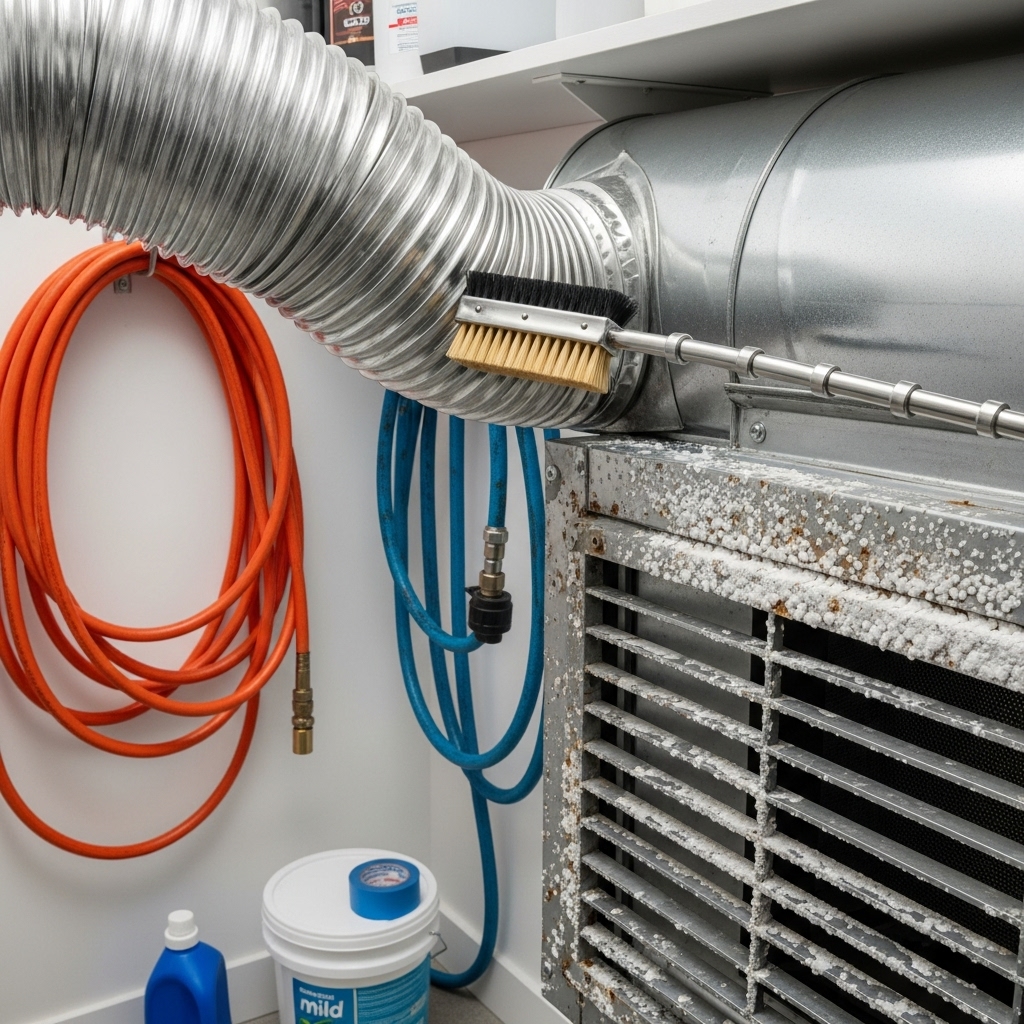Introduction
Malibu’s coastal lifestyle is hard to beat, but ocean air, humidity, and seasonal particles can make ductwork maintenance an ongoing priority. Salt-laden mist, pollen from canyon vegetation, and occasional wildfire smoke all find their way into returns and supply pathways. This curated list of practical tips is designed specifically for Malibu’s coastal homes so you can protect indoor air quality, support HVAC efficiency, and extend equipment life. If you prefer a side-by-side comparison of DIY practices and industry standards as you implement these tips, consult a reputable guide to air duct cleaning to align your plan with proven methods.
Remember, duct cleaning is most effective when combined with filtration upgrades, smart ventilation, and moisture control. Use these tips to build a sustainable routine tailored to Malibu’s conditions.
Tip 1: Start with Filter Strategy
Filters trap the fine particles that otherwise settle inside ducts. Choose a filter your blower can handle, ideally in the MERV 11–13 range if compatible. Check monthly, change as needed, and keep extras on hand during smoky or dusty seasons. A strong filter strategy reduces the frequency and intensity of duct cleaning while keeping indoor surfaces cleaner.
Tip 2: Clean Registers and Returns Regularly
Grilles and returns are the gateway to your ducts. Every one to three months, remove registers, wash metal ones with mild soap and water, and thoroughly dry them to avoid corrosion. Wipe other finishes with a damp microfiber cloth. A quick vacuum just inside the opening helps prevent accumulated dust from being blown back into rooms.
Tip 3: Manage Humidity to Prevent Odors
Malibu’s humidity can make dust sticky and trap odors. Use bath fans, run kitchen range hoods when cooking, and ventilate during hours when outdoor air is cleanest. Consider a dehumidifier during damp spells to discourage microbial growth and keep duct interiors dry.
Tip 4: Be Smoke-Event Ready
When wildfire smoke affects the region, adopt a temporary filter change schedule. Keep windows closed at peak smoke times, then do a light duct cleanup once outdoor air improves. Replace filters again if they load quickly. This fast-response approach keeps your system from recirculating fine particulates for weeks.
Tip 5: Use Gentle Agitation, Not Force
When you vacuum ducts, combine a HEPA unit with extendable, soft-bristle brush rods. Gentle, steady agitation loosens dust without harming flex ducts or joints. Avoid hard thrusts, sharp turns, or aggressively spinning brushes that can tear duct lining or dislodge sealant.
Tip 6: Prioritize Return Ducts
Returns collect the most dust. Give them extra attention during every cleaning cycle. Vacuum slowly along the bottom and corners, where debris gathers. Clean the return grille more often than supply registers to prevent dust recirculation throughout your home.
Tip 7: Inspect the Blower Compartment
If permitted by your warranty and comfort level, remove the blower access panel and carefully vacuum around the housing. Lightly wipe reachable surfaces with a barely damp microfiber cloth. Keep water away from electronics and ensure everything is dry before reassembly.
Tip 8: Treat the Coil Area with Care
The evaporator coil is critical to comfort and efficiency. Use a soft brush attachment and coil-safe cleaner if needed, following label directions. Never saturate the coil or surrounding insulation. Allow complete drying before powering the system to avoid musty odors.
Tip 9: Watch for Salt and Corrosion
Ocean air can accelerate corrosion on metallic grilles and screws. Dry all washed metal parts completely, and periodically inspect for rust or pitting. Replace compromised components promptly to maintain structural integrity and aesthetics.
Tip 10: Improve Duct Sealing and Insulation
Leaky or poorly insulated ducts waste energy and draw contaminants from attics or crawl spaces. Sealing accessible joints and adding insulation where appropriate can reduce dust infiltration and improve comfort, especially in Malibu’s microclimates.
Tip 11: Ventilate Strategically
Ventilate during periods when outdoor air quality is best. In coastal zones, mornings may be damper while afternoons bring breezes; choose windows-of-opportunity to flush indoor air without inviting in excessive moisture or particulates.
Tip 12: Keep a Maintenance Log
Record filter changes, duct cleaning dates, and any observed odors or hotspots. A simple log helps you detect patterns tied to seasons, weather events, or renovations, guiding future cleaning and filtration decisions.
Tip 13: Avoid Harsh Chemicals
Strong solvents and fragrances can degrade duct materials and indoor air. Focus on mechanical removal, mild detergents for grilles, and coil-safe products where required. Dryness and cleanliness outperform heavy scents every time.
Tip 14: Prepare for Renovations
Before remodeling, protect returns and supplies with temporary covers. During the project, change filters more often and vacuum grilles weekly. Afterward, conduct a focused duct clean to remove construction dust that may have migrated into the system.
Tip 15: Consider Professional Deep Cleaning
Skilled technicians use negative-pressure systems and specialized brushes to access long runs, tight bends, and complex trunks. This can be especially helpful in Malibu homes where salt tackiness and humidity make residue harder to remove. When evaluating providers, compare their containment, filtration, and verification steps to recognized practices for professional air duct cleaning so you know what to expect.
Tip 16: Balance Airflow Room by Room
After cleaning, verify that each room receives adequate airflow. Make sure furniture does not block supplies or returns. Balanced airflow helps your system perform efficiently and keeps temperatures comfortable throughout the home.
Tip 17: Adjust for Seasons
Summer can bring higher humidity; late summer and fall sometimes bring smoke. Match your filter schedule and light-clean routine to these shifts. Proactive timing prevents buildup and keeps homes feeling fresh.
Tip 18: Inspect After Windy Days
Santa Ana winds or blustery coastal days can push extra dust into returns. A quick check of grilles and a once-over with a vacuum just inside the openings can prevent larger cleanups later.
Tip 19: Pet-Friendly Practices
Pets add comfort and companionship, but dander and fur can load filters. Brush pets regularly, vacuum floors and upholstery often, and consider upgrading to a higher-efficiency filter to capture more dander at the source.
Tip 20: Verify Results After Each Clean
Take before-and-after photos, shine a light into several ducts, and note any odor changes. Consistent verification helps you refine your routine and know when to call for expert help.
FAQ
Q: How often should coastal homes clean air ducts? A: Inspect annually, clean as needed, and increase frequency after smoke events, renovations, or periods of unusual humidity.
Q: Do essential oils help? A: Scent can mask problems but does not solve them. Prioritize dust removal, filtration, and humidity control.
Q: Will stronger brushes clean faster? A: Force can damage ducts. Use gentle agitation and HEPA capture to avoid harm.
Q: Can I skip coil cleaning? A: Do not skip if the coil is dusty and accessible; a dirty coil undermines efficiency and can cause odors. Use coil-safe methods only.
Q: What if I still smell mustiness? A: Re-check humidity, verify drainage at the coil, and inspect for moisture sources. Persistent odors may warrant a professional assessment.
Bring Fresher Malibu Air into Your Home
If you want deeper reach, a full-system assessment, or post-smoke cleanup that goes beyond DIY, schedule a trusted air duct cleaning service. With the right strategy and support, your Malibu coastal home can feel fresh, comfortable, and resilient through every season.

